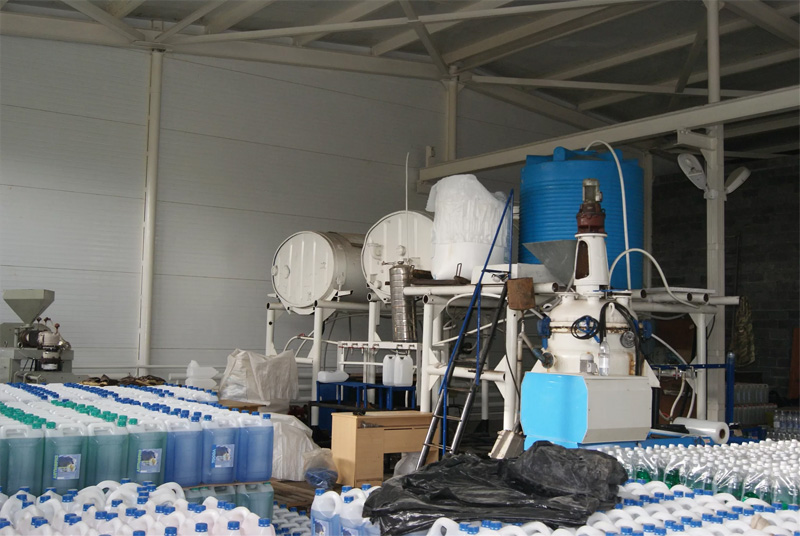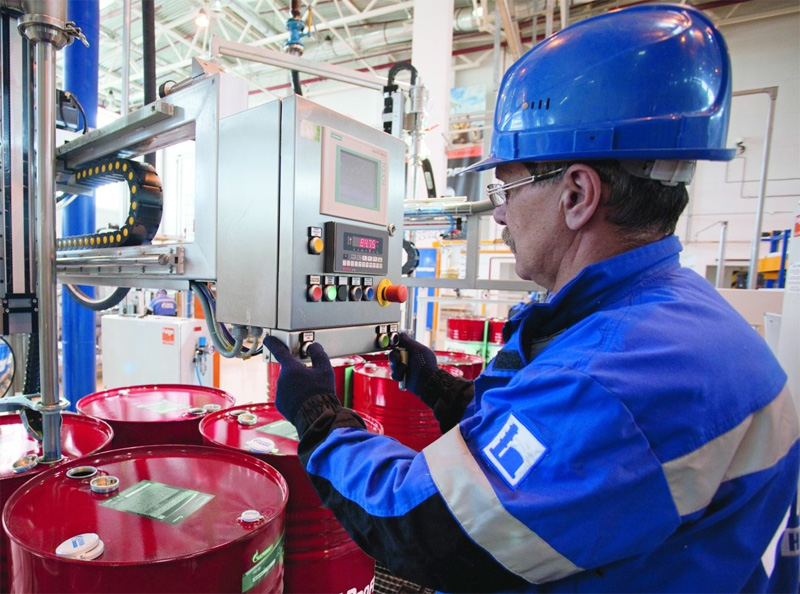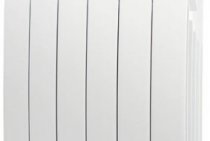Why change coolant
Without a coolant, the correct operation of an automobile engine and the operation of a vehicle are impossible. Below we will explain how to change antifreeze (antifreeze), but first we need to dwell on why this should be done at all.
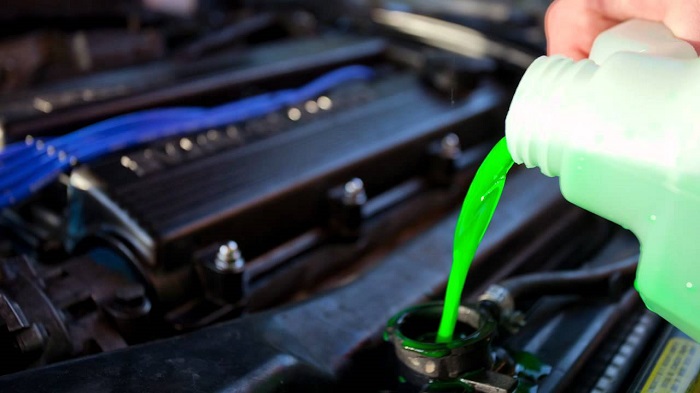
Today, a huge range of products intended for pouring into the cooling system is on sale. The motorist can only choose the best option and regularly replace the coolant. This will insure you and your car from serious problems. Including:
- corrosive processes. In addition to corrosion damage to the metal parts of the system, it becomes an obstacle to proper heat transfer directly in the system and in the power unit. At the same time, corrosive layers in the radiator channels reduce the coolant circulation rate and reduce the correct heat transfer.
- Overheating of the power unit. If the heat exchange in the engine is disturbed, the likelihood of overheating increases. This leads to an increase in fuel costs and a decrease in engine power.
- Precipitation. Usually, antifreezes that have silicate components in their composition “suffer” from this. Violation of the timing of the replacement of these funds leads to the precipitation of an insoluble precipitate on the surfaces inside the system, which provokes overheating of the motor.
- The appearance of cracks. With excessively diluted coolant, cracks appear on the surfaces of the expansion tank and nozzles due to sudden temperature changes.
- Erosive processes of cavitation type. Cavitation is a process that occurs within a system in which gas bubbles form and burst due to a decrease in pressure. The internal surfaces of the system are damaged at the molecular level, at the moment of collapse of gas bubbles. High-quality coolant forms a protective film that prevents erosion.
Why it is not recommended to pour Antifreeze into the heating system
Due to the low cost, some homeowners may have the idea to use Antifreeze in the home heating system as antifreeze, to make sure this idea is hopeless, consider the consequences of this decision:
- In addition to the fact that Tosol fully absorbed all the disadvantages of glycols, it is made using a different technology and decomposes at a lower boiling point of 105º C. When using high-temperature solid fuel boilers, the risk of overheating increases significantly, and decomposition can lead to failure of the circular electric pump, clogging of taps and fittings. The damage will many times exceed the penny savings on an unusable composition.
- The additives that make up Tosol are not intended for heating systems, they will not only be useless, but are also likely to harm the elements of the heating circuit, fittings and pumping equipment after a while.
- The most weighty argument is the pointlessness of using Tosol for the sake of saving financial resources - in automotive technology, its service life is 6 times less than modern antifreezes, a similar situation will occur in the heating system with similar temperature conditions. Antifreeze will have to be drained from the pipeline at least every year, as a result, the costs of using it will increase several times.
- Also, Tosol, made according to traditional methods, is strictly forbidden to be mixed with modern antifreezes due to the difference in manufacturing technologies - a chemical reaction occurs, some additive components precipitate with clogging of the flow channels.

Rice. 8 Graph of freezing point versus glycol concentration
What is antifreeze and what is it for?
Antifreeze is the general name for all antifreeze fluids.Antifreeze is used to cool internal combustion engines that can heat up during operation. The main feature of antifreeze is its high resistance to low temperatures. This means that such a liquid has a freezing point lower than that of water. Such a difference in temperatures allows the use of antifreeze as a coolant for car engines operated both in summer and in winter.
The coolant is poured into the expansion tank of the car (in some models even at the beginning into the radiator), from where it enters the cooling system, through which it circulates thanks to the water pump, or, as it is also called, the pump.
The engine cooling system allows you to extend its service life and significantly increase its operating time. After all, many cars are used to travel long distances. In such modes, the engine experiences a large load, while increasing its own temperature.
Overheating of the engine leads to the melting of gaskets and seals, as well as disruption of the operation of various mechanisms and assemblies. An overheated engine can simply jam and then a very expensive repair awaits it.
Preparation of antifreeze before filling
To obtain the required temperature parameters and save money, before using antifreeze, it must be diluted with water. It should be borne in mind that the resulting crystallization temperature is related to the type of boiler: if a gas and electric boiler is used in the system, the permissible crystallization threshold is not higher than -20º C, when operating liquid and solid fuel boiler equipment, the threshold is lowered to -25º C.
Due to the non-linear dependence of the crystallization point on the concentration, when diluting the coolant, they are guided by tabular data (Fig. 9). It can be seen from them that if, for example, we have a 68% composition with crystallization at -65º C, then in order to achieve a coolant temperature of -20º C, corresponding to a 36% glycol content, we will have to dilute the purchased composition with water a little less than half.
If an anti-freeze with a temperature limit of -30º C and a glycol concentration of 45% is purchased, then to crystallize the coolant at -20º C with 35% glycol, 22% of its total volume of water will have to be added to the liquid.

Rice. 10 Characteristics Tosolov
Video - How to replace antifreeze with a VAZ 2114
Before proceeding with the replacement of antifreeze, it is worth recalling that it is quite toxic and its contact with open areas of the body, and even more so in the eyes and mouth, entails unpleasant consequences. In addition, it is recommended to replace antifreeze on a cold engine, since when it comes into contact with hot engine elements, it emits a characteristic odor that is very bad for human health. Thus, it is necessary to allow the engine to cool down and only then proceed to replace the coolant.
Procedure:
1. Install the car in the pit, put the first gear and exclude the possibility of any movement. Disconnect the battery terminal and set the interior heating valve to hot air (that is, fully open the valve). Don't forget to unscrew the expansion tank cap.
2. Turn off bolts of fastening of protection of a crankcase of the engine and dismantle it.
3. Place an empty container of sufficient volume under the radiator drain plug. Unscrew the plug and wait until all the antifreeze has poured into the container. You should wait at least 10 minutes and try to make sure that drops do not fall on the generator or its belt.
4. As soon as all the antifreeze has drained, move the container under the drain hole in the cylinder block and unscrew the special bolt. To prevent antifreeze from getting on the ignition module, you can put some kind of plate. Wait until all the antifreeze has drained into the container, tighten the bolt on the engine and the plug on the radiator, and after that you can start filling in new coolant.
5.This step should only be performed by those who are going to change one brand of antifreeze to another brand of antifreeze. To do this, you must first flush the cooling system. To do this, fill the expansion tank with water or a special flushing fluid. Close all covers and start the engine. After five minutes of operation, stop the engine and let it cool down. Drain the water or flushing fluid and replace the drain plugs. After this procedure, you can fill in antifreeze of any other brand.
6. Fill the coolant into the expansion tank to a level between the “max” and “min” marks, screw on the tank cap and let the engine run for a while. After that, add antifreeze again to the required level and close the cap.
This completes the replacement of antifreeze. Good luck on the roads!
Process description
It will probably surprise you that homemade antifreeze contains alcohol. After all, it is clear that, for example, at a negative temperature on the windshield, alcohol will evaporate, only water will remain, which itself will quickly freeze. But, here ethylene glycol saves everything. It reduces the volatile property of the solution, so the alcohol does not have time to evaporate.
Often, a ratio of one to two is used to prepare the solution, that is, one part of alcohol and two of water is taken.
This ratio can be changed if the temperature drops much below zero. At an air temperature of minus five degrees, a five-liter canister needs 0.6 liters of alcohol, at minus ten - one liter, at minus fifteen - 1.25 liters, at minus twenty - 1.65 liters, at minus twenty-five - two liters, at minus thirty - 2.5.
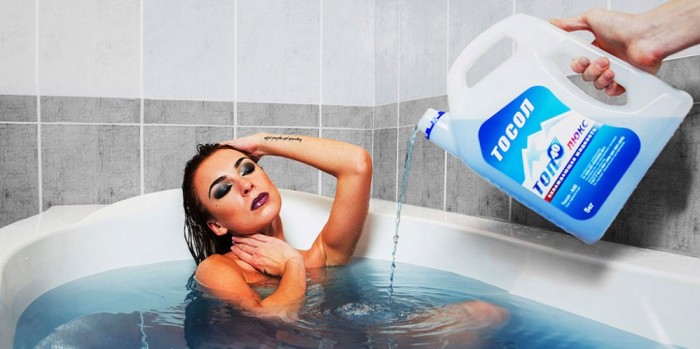
Please note that ethylene glycol, like the antifreeze it contains, is poisonous. If you are very concerned about your health, replace ethylene glycol with propylene glycol
It is much more expensive, but it does not have toxic properties.
If desired, natural flavoring can be added to homemade antifreeze. It will remove the alcohol smell. You can use, for example, essential oil. By adding ten drops of it, you will rid the antifreeze canister of unwanted odor. We also note that you can enhance the cleaning properties of the liquid by simply adding a tablespoon of laundry detergent to it. If you follow all the above recommendations, then you will get antifreeze with your own hands no worse than the factory one.
How to choose the right one when buying
If you are going to purchase a high-quality refrigerant for the cooling system of your car, then you must first of all pay attention to the recommendations for operating your car from the manufacturer. To do this, you should carefully study the documents for the vehicle: they must necessarily indicate which antifreezes can be directly used to cool the engine of your car.
If it is impossible to find a similar factory fluid in a regular auto shop, contact the official dealer of your car brand and order the same coolant or ask for help in choosing an analogue
The amount of antifreeze is also indicated in the operating documentation (on average, it is 6-8 liters of liquid).
Important! If during the process of replacing the coolant you drained the remaining one and found impurities and a characteristic precipitate in it, the engine cooling mechanism must first be cleaned with detergents containing organic acids, and then use distilled water.
We recommend that you find out if you can add water to antifreeze.
Antifreeze for cars can be of 4 types, which differ in functional additives:
- traditional (traditional) mineral type class G 11.It is mainly used for cars that were produced before 2000 in North America, South Korea, Japan, as well as domestically produced cars (GAZ, VAZ, UAZ). In its structure it contains inorganic substances that slow down corrosion (salts of phosphoric, nitric and boric acids). Among other antifreezes, it is distinguished by a relatively short period of operation (up to 2 years), as well as a low boiling point (up to 105 °);
carboxylate (OAT) organic grade G 12. Most effective in inhibiting rust (by pinpointing potential sources of corrosion) and vapor condensation. In addition, it covers problematic areas with a thorough protective layer and contributes to faster cooling of the engine. The service life of such antifreezes is from 5 to 7 years. They are widely used in cooling systems of such cars as French Renault, South Korean KIA / Hyundai, American Ford, Italian Fiat.
hybrid (hybrid) type class G 12 +. It is a mixture of almost equal proportions of inorganic (salts of silicic, nitrous and phosphoric acids) and organic carboxyl-containing additives. Such antifreezes are less effective than the latter due to the presence of inorganics. The maximum service life is 3-5 years. Most often used in German Mercedes-Benz and BMW, as well as American Chrysler.
lobrid (lobrid) type class G 13. A new kind of antifreeze. It differs from the latter by the ratio of organic (carboxylates) and inorganic (silicates) additives - 9: 1, respectively, which positively affects its technical characteristics. Suitable for use in cars of the brands Seat (Spain), Citroen and Peugeot (France), Skoda (Czech Republic), Volkswagen (Germany). The service life of antifreezes with lobrid additives is almost the same as that of carboxylate ones - 5-6 years.
Did you know? Ferruccio Lamborghini started his business with the production of not cars, but tractors. Having a Ferrari 250 GT in his possession, he often complained about alleged "factory" clutch problems. When Ferruccio turned to Enzo Ferrari with a remark about this deviation in the operation of the mechanism, the latter pointed out to Lamborghini that he was ignorant in the process of manufacturing sports cars (in contrast to Ferruccio's direct specialty - the production of tractors). The future industrialist and businessman decided to completely disassemble the car and improve all its components. Thus began the automotive-productive career of Lamborghini.
How to replace antifreeze in a car with your own hands
It is not difficult to replace the coolant filled with the factory, so this procedure can be performed by yourself. It is recommended to put on gloves on your hands before carrying out this process, since antifreezes are toxic in themselves and, if they come into contact with open areas of the skin, can cause severe intoxication.
The procedure for replacing antifreeze in a car is as follows:
- Install the vehicle on top of the inspection hole on the lift using a jack so that its rear axle is slightly higher than the front.
- To drain the remaining antifreeze, unscrew the tap or special drain plug at the bottom of the engine.
- After loosening the plug of the expansion tank, it is necessary to unscrew the drain valve or the lower radiator plug.
Unscrew the thermos of the thermostat, in which coolant up to 1 liter can remain.
Carefully drain the old antifreeze from all the above parts of the mechanism into a pre-prepared container up to 10 liters.
Rinse the car engine cooling mechanism with distilled water (up to 10 liters will be enough), and in case of precipitation or impurities, also with organic acid detergents that can be purchased on the car care market.
During the cleaning of the system, the engine must be turned on, and its operation must last from half an hour to 60 minutes (taking into account the degree of antifreeze contamination).
Tighten the radiator and engine cylinder block caps, screw in the thermostat housing and place the machine strictly horizontally.
A new "coolant" based on ethylene glycol should be diluted with distilled water before replacement (usually these proportions are indicated in the instructions for use).
After you have disconnected the uppermost pipe near the intake manifold that supplies fluid to the engine, start pouring new antifreeze into the neck of the expansion tank through a funnel (until the liquid begins to flow out of the pipe extended from the first point).
Close the tank lid, place the previously disconnected pipe in place and clamp it at the connection point with a bracket or clamp.
Start the engine. Let it run for 20 minutes until the fan turns on.
Check the level of antifreeze according to the marks on the expansion tank (the norm is between the minimum and maximum marks “Min” and “Max”). If the coolant is at a level that is below the minimum mark, do all the previous steps, except for cleaning the cooling mechanism, and add the required amount of antifreeze (but only with the engine already cooled).
Video: How to replace antifreeze
Thus, we can conclude that antifreeze plays an important role in the quality functioning of the internal combustion engine of a car. Monitoring the integrity of the elements included in the cooling system, timely and correct replacement of the refrigerant will protect you from unforeseen unpleasant situations on the road.
Important! It is impossible to mix old and new coolant due to the fact that the expiration date of the first one is already shorter. And here's why: the different components that make up them can enter into a chemical reaction, which can adversely affect the working properties of antifreeze .. Replacing old antifreeze with a new one at home is not so difficult
The main thing is to do everything according to the instructions, do not forget to drain the old fluid and only after the system is completely cleaned, fill in a new one.
Replacing old antifreeze with a new one at home is not so difficult. The main thing is to do everything according to the instructions, do not forget to drain the old fluid and only after the system is completely cleaned, fill in a new one.
Why do you need antifreeze in a car
The key purpose of the coolant (or coolant) is to reduce the level of thermal impact on the components and other parts of the internal combustion engine installed in an automobile vehicle during its operation.
Moving in a vicious circle with the help of a centrifugal pump, directly touching the walls of the cylindrical engine block (where the temperature of the combustible fuel reaches the maximum level of degrees Celsius), the antifreeze, cooling in the radiator, through a special cavity (“cooling jacket” of the power structure) takes heat and removes its excesses from the engine cylinder system. An expansion tank in the cooling mechanism is provided for the "cooler" reserve.
Did you know? The word "land" in the name of the Land Cruiser Toyota was adopted by the manufacturer from another car manufacturer - Land Rover, and until 1954 this model was called Toyota BJ. Antifreeze for such SUVs is selected depending on the modification.
In order for the engine to cool faster, 2 coolant options are used: distilled water and antifreeze.
The antifreeze liquid contains 2 basic components: water and polyatomic alcohols (ethylene or propylene glycol), which have a specific ability to expand their volume when heated (and this is one of the most important functions of a refrigerant for an automotive cooling system).
Learn how to check antifreeze and protect your car from dangerous fakes.
The density of propylene glycol is lower and the viscosity is higher than that of ethylene glycol. Thus, the former is less toxic. Unfortunately, the latter quality, when exposed to external sub-zero temperatures on the internal combustion unit, provokes a drop in the rate of circulation of the liquid through the auto cooling mechanism, negatively affecting the efficiency of its main functions.
In the structure of antifreeze, in addition to water and polyhydric alcohols, as a rule, there are various additives that improve the working properties of the product: suppression of the start of corrosion in the form of rust on metal surfaces, boiling when the maximum temperature level is reached, destruction of rubber elements, creation of steam condensate.
Important! The quality, service life and cost of the coolant depend on which additives were added.
Features of filling with ethylene glycol antifreeze
Considering the toxicity of ethylene glycol, it is necessary to pour this coolant into the heating system with extreme caution, using containers that are unnecessary in the household for the purpose of their further disposal. The coolant is usually pumped into the system using an inexpensive electric pump or a special hand pump of a presser; budget vibrating models costing about 20 USD are suitable.
After use, they are thoroughly washed with hot water and detergents and then used for watering vegetable gardens in household plots or for technical needs.
If the system uses an open circuit, and the funds do not allow you to purchase expensive propylene glycol, you can fill in ethylene glycol-based antifreeze with simple safety measures. To do this, the storage tank on the top floor or attic is tightly closed with a lid (rubber gaskets or heat-resistant sealants can be used to increase sealing), and a sealed tube is inserted into it, which is brought outside the house through a window or roof.
Car engine coolant general information
It is well known that an internal combustion engine is a heat engine that converts the energy of burning fuel into mechanical work. Naturally, such an installation must be cooled in order to maintain the required thermal regime.
In other words, for the normal operation of all components and parts of the internal combustion engine under load, the heating of the motor must remain within strictly specified limits. The operating temperature of the engine should neither fall below the specified threshold nor exceed the calculated value.
On a running engine, coolant heating can reach up to 100 degrees Celsius and even higher, while after stopping the engine, the liquid cools down to outside temperature during a long idle period.
As you can see, the working fluid is in rather difficult conditions. At the same time, special requirements are put forward for it. The fact is that the properties of the liquid should, first of all, ensure maximum efficiency of the engine cooling system. The reliability of the unit and its resource directly depend on this. The coolant must have high thermal conductivity and heat capacity, have a high boiling temperature threshold, and sufficient fluidity.
Moreover, after cooling, such a liquid should not greatly expand in volume and crystallize (turn into ice). In parallel with this, the liquid should also not foam during operation, and also not be aggressive, that is, cause corrosion of various metal elements, affect rubber pipes, seals, etc.
First of all, it has a low boiling point, evaporates quickly, and various impurities in its composition (salts, etc.) cause active scale formation. Also, water freezes in the system when the outside temperature drops to zero degrees and then ice forms.
In this case, a significant increase in the volume of frozen water occurs, which causes ruptures of channels and pipes, that is, damage occurs, cracks appear in metal parts, etc. For this reason, water cannot be used year-round in regions where average daily temperatures drop to zero or below in winter.
In fact, the name "antifreeze" itself comes from the English "antifreeze", that is, non-freezing.These compositions quickly displaced water from liquid cooling systems, thereby greatly simplifying the features of vehicle operation.
As for TOSOL, this development is an analogue of Western antifreeze, only it was developed on the territory of the former USSR. The specified type of coolant was originally created for VAZ cars, while the trademark was not registered.
Today, many manufacturers of coolants in the CIS use the well-known name TOSOL for their products, however, the performance properties of liquids may differ due to the presence of various additives and additional components.
What is required for implementation
The main task facing novice businessmen is the correct assessment of production volumes, its profitability and a qualitative study of the market for demand and competition.
Based on this, you will need to draw up a competent plan, which will reflect the main aspects related to the implementation of the business idea under consideration.
It is also necessary to register a future enterprise, purchase equipment and raw materials to start production, select personnel, decide on the type of advertising, on which the turnover and income received from the sale of the manufactured product will depend.
Step by step start instructions
- Registration. To produce cooling auto chemicals, you do not need to obtain a license. It is only necessary to register a company as an individual entrepreneur or LLC, choosing the appropriate taxation system. You will also need to issue permits in the fire, sanitary and environmental inspections. To ensure brand recognition, it is worth considering a logo, which is also subject to registration to protect against possible fakes.
- Room. For a steadily developing production, it is necessary to rent a room with an area of at least 200 m² in order to accommodate all the equipment and ensure the free movement of personnel. As for the storage of raw materials and finished products, you can organize a warehouse on the street or allocate a few meters for storage in an existing workshop. In addition, the production of coolant should only be carried out if the premises have passed the fire inspection and comply with the third class of safety. It is necessary to appoint a person responsible for safety at work. The workshop must be equipped in accordance with fire safety requirements with a box of sand, fire extinguishers, alarms. There should be no waste left during production. Above each unit of working equipment there should be a powerful hood. The rental cost will be approximately 100,000 rubles per month, and about 200,000 rubles will need to be invested in preparing the premises for work.
- Equipment and raw materials. To launch an industrial line for the production of antifreeze, you will need to purchase and install the following equipment (prices are in rubles): a special installation - 150,000; water demineralization equipment - 80,000; containers where the components will be mixed - 50,000; steam condenser - 150,000; reactor - 300,000; equipment for air release from packaging - 60,000; filling machine - 60,000. In the manufacture of antifreeze, three main components are used: water, concentrates and additives. Since the business will be organized on an ongoing basis, it is better to immediately conclude contracts with suppliers of raw materials. The cost of components to start production will be approximately 100,000 rubles.
- Staff. The number of people working in production will depend on its volume. It is desirable that all the people who make up the staff have a secondary technical education and have the skills to work with equipment. A workshop with an area of 200 m² needs to take at least 10 people, among whom will be apparatchiks, adjusters, and packers.
- Advertising and search for buyers.It is better to present this product with the help of outdoor advertising: leaflets, banners, signs, information boards. It is recommended to place them in those places where there is often a large congestion of vehicles. It will not be superfluous to attract potential buyers by creating your own website. In general, you will have to spend at least 50,000 rubles on a marketing campaign.
Mixing antifreeze and antifreeze
It should be noted that the compatibility of various coolants depends on the technical conditions of their manufacture. In simple terms, fluids may be completely incompatible or only partially compatible.
Taking into account the fact that during operation it periodically becomes necessary to raise the coolant level in the expansion tank (the water in the composition boils away over time), it is more correct to add distilled water or use only the brand and type of antifreeze that was previously used.
If an emergency malfunction occurred, then it is optimal or completely to drain the existing residues, flush the system and fill in fresh coolant in full, or add antifreeze that is suitable in color and properties.
Foreign standards define various properties of liquids based on ethylene or propylene glycol, determining the purpose, adjusted for operating conditions. Liquids are divided into compositions for passenger cars, small trucks, heavy vehicles, special equipment, etc. Note that antifreezes according to ASTM type D 3306 are allowed for use on domestic passenger cars.
You should also take into account the individual specifications of the automakers themselves, who often put forward a number of their own requirements. In the list of various regulations of large concerns, it should be noted that the use of antifreezes is prohibited or highly discouraged, in which the presence of various corrosion inhibitors, including nitrites, phosphates, etc., is noted.
At the same time, the maximum content of silicates, chlorides and other components in the coolant is also determined. Following these guidelines allows you to extend the life of seals, avoid active scale formation, and increase the level of protection against corrosion.
Financial calculations
Start-up capital
The amount of initial investment will be approximately 1,320,000 rubles. This will include the following expenses (rubles):
- registration of documents and permits - 30,000;
- rent - 100,000;
- preparation of the premises - 200,000;
- equipment - 850,000;
- raw materials - 100,000;
- advertising - 50,000;
- other expenses - 20,000.
Monthly expenses
Current expenses include costs associated with:
- rent - 100,000 rubles;
- purchase of raw materials - 50,000 rubles;
- payment of wages - 350,000 r;
- advertising - 10,000 rubles;
- transport - 15,000 rubles;
- payment of utility bills - 20,000 rubles.
The total amount will be 545,000 rubles.
How much can you earn?
The production line, located in a 200 m² room, will be able to produce at least 32,000 liters of coolant per month. The average cost of one liter is about 20 rubles. In a month, it will be possible to earn about 640,000 rubles. Taking into account the amount of monthly expenses, the net profit will be 100,000 rubles.
